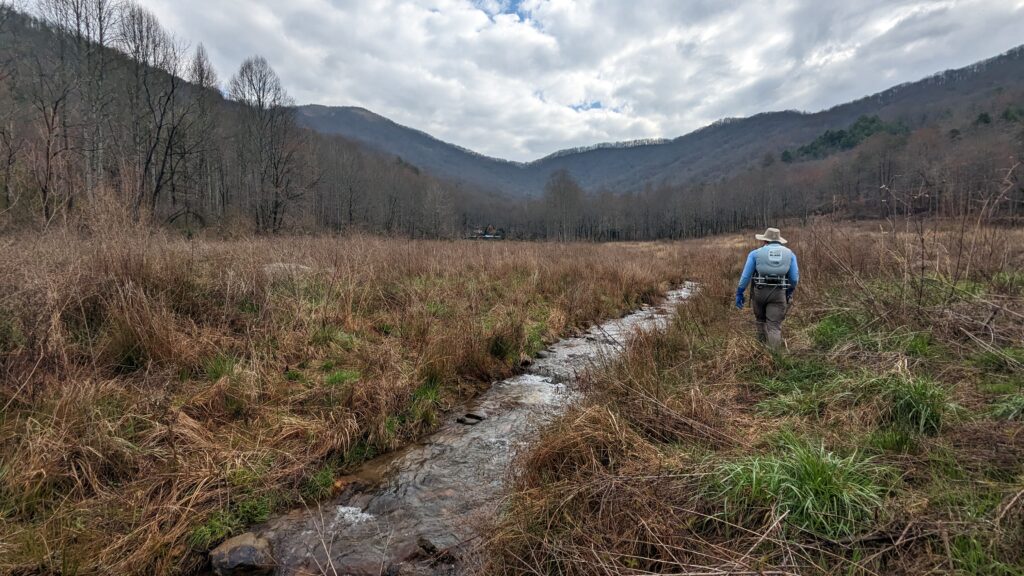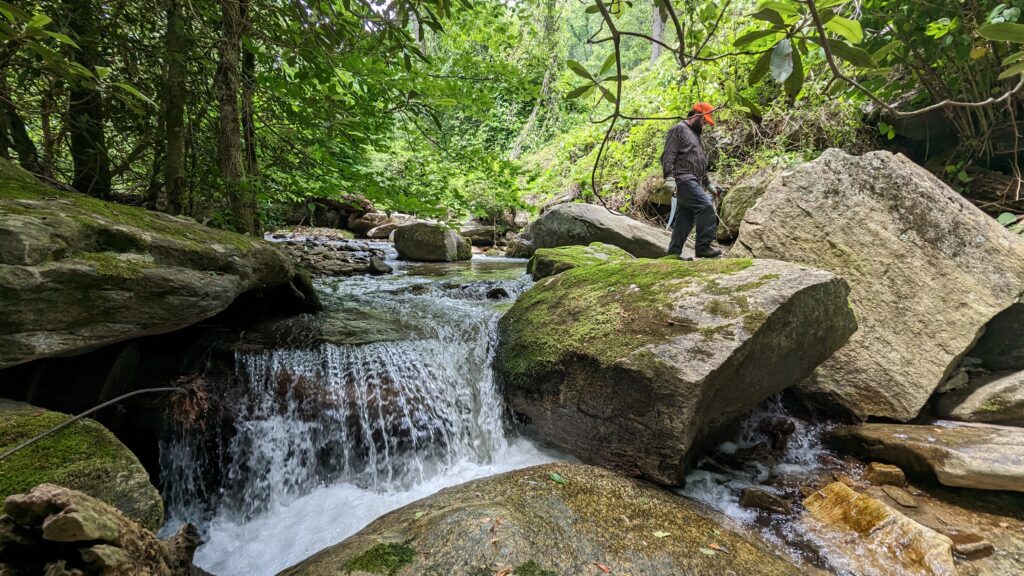An Introduction to Understanding Stream Recovery from Flood Events
Ecoforesters has done amazing things to help streams recover on my projects at Wildlands Engineering. They have helped reduce invasive species pressure on riparian reforestation, an important step in stream and wetland mitigation projects. Reforestation supports the goal of maintaining shaded streams and stable banks. Our projects enjoy reasonable funding and benefit from the input of a diverse group of professionals through the phases of planning, design, implementation, and maintenance. For landowners of working lands in agriculture or forestry, resources for stream management can be more constrained and streams can present significant management challenges, especially in the aftermath of Hurricane Helene. Streams are resilient, but recovery takes time.
Rather than try to address frequently asked questions on stream recovery the goal of this article is to establish a stronger base of understanding in dealing with streams and to offer guiding principles that can help landowners to evaluate and plan future projects, along with providing some resources to further your understanding and learn more.
Understanding Your Stream:
The first guiding principle is to spend time understanding and assessing your stream’s characteristics. Streamstats (https://streamstats.usgs.gov/ss/) will delineate your watershed and provide a report on the land area and land uses that drain to your stream. Using regionally collected “bankfull” geometry data, it will also predict the typical width, depth, area, and range of flows you may anticipate on your stream. (A .kmz file can be downloaded and opened in Google Earth as one option for visualizing the watershed draining to your stream). Other websites, such as NC OneMap, provide aerial photography (https://www.nconemap.gov/pages/imagery) and topographic information from high-quality Light Detection and Ranging (LiDAR) (https://www.nconemap.gov/pages/elevation). NCDOT has historic aerial photography of high quality that can be used to understand historical conditions (https://www.arcgis.com/apps/mapviewer/index.html?webmap=91e02b76dce4470ebd7ec240ad202a04). Streams also behave and function differently based on their landscape position and the shape of their valley. Understanding your watershed, natural stream geometry estimates, and the land use history provides a basis for evaluating existing conditions and management actions.

Learn Your Steams History:
Historically, streams and watersheds have been highly manipulated. Watersheds were clearcut in the late 1800s and early 1900s in Appalachia. Many streams were either relocated to the side wall of the valley or straightened into ditches to improve drainage and expand agricultural production. These legacy activities set the stage for how channels respond to flooding today.
For example, streams confined by berms or deepened through ditching or erosion will accelerate their downcutting. This reduction in floodplain access means ever-increasing stress on the channel, causing larger and more material to mobilize during high flows and accelerating the erosion cycle. Eventually, the channel banks collapse, and the channel widens, working towards forming a new floodplain at a lower base stream level.
Stream downcutting propagates through a process called head cutting. This form of erosion occurs from downstream to upstream, lowering the channel, which can increase streambank heights and threaten crossings. Advancing headcuts pose a risk to the upstream channel and understanding when these exist is an important part of evaluating future risk. Observing streams in less disturbed settings can help you understand current conditions and evaluate potential uplift or management strategies.

Define Your Role:
Finally, when considering your role in stream recovery, it’s important to align your actions with your goals. Stream restoration professionals often employ a pyramid framework for improving parts of the stream system that they can more readily influence – often the physical, hydraulic, geomorphic or physicochemical conditions. The pyramid is influenced by geological factors and climate which drive the hydrology of streams, along with land use. (https://stream-mechanics.com/stream-functions-pyramid-framework/)
The resources presented here can help you make sense of your role and improve the basis for your decision making. The problems themselves will be much more complicated and will require tough decisions and likely a prioritization of efforts based on available resources and viable options. I encourage you to talk to people in the community that work in stream and watershed management professionally who may help educate and guide you with how to approach problems and what options you may wish to consider. Try to be open to the possibility that the long game may be the most effective. Remember, streams are a common resource and by positively influencing your stream, you are helping your neighbors to reduce flooding or sedimentation or enhance fisheries and aquatic life on their land. Also, it is understandable that at times expediency and cost will drive your decisions. Try to consider what you can do today, this year, this decade and in your lifetime. Additionally, sometimes engineered solutions can only go so far and management solutions that require sacrifice are the only thing that can further influence outcomes.
Actions that consider increasing flood frequency due to climate change, the nature of streams and their need to access floodplains to function properly, and the influence of land use on hydrology as well as the influence of prior manipulation on current stream behavior will have greater long-term success.
